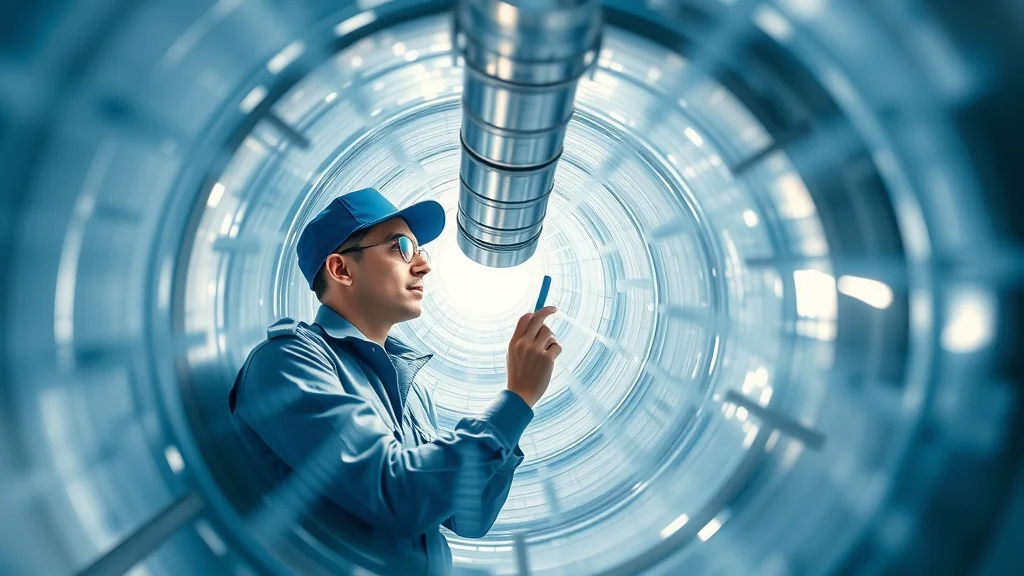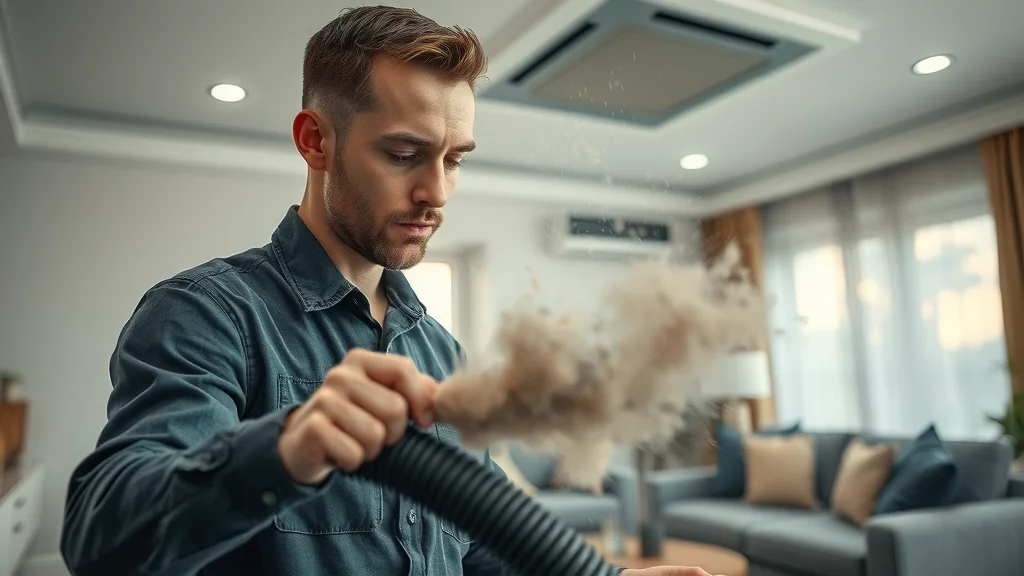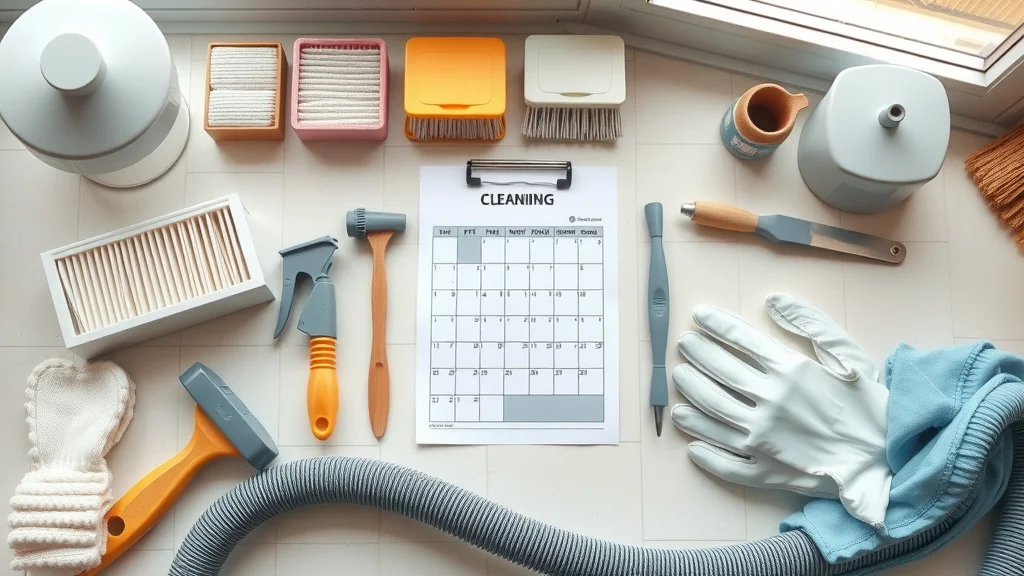Did you know that dirty air ducts waste nearly 25% of your heating and cooling energy? This hidden drain not only spikes your energy bills but also pollutes your indoor air. By unlocking the close connection between energy efficiency and vent cleaning, you’ll discover practical ways to cut your utility costs and breathe easier in a cleaner, healthier home. Let’s reveal the simple steps to a smarter, more efficient home today.
What You’ll Learn About Energy Efficiency and Vent Cleaning
- The critical connection between energy efficiency and vent cleaning
- How clean air ducts support energy savings and clean air
- Step-by-step advice on air duct system maintenance and duct cleaning
- Practical tips for reducing energy bills through HVAC cleaning
The Startling Truth: How Dirty Air Ducts Impact Your Energy Efficiency and Vent Cleaning
“Studies reveal that nearly 25% of heating and cooling energy is wasted due to dirty air ducts. Discover how vent cleaning could lower your energy consumption, cut energy bills, and improve indoor air quality.”

Dirty air ducts are more than just an eyesore—they are silent contributors to wasted energy and higher costs. As dust and debris accumulate inside your duct system, your HVAC system needs to work harder to move air throughout your home, resulting in significant energy loss. Over time, this not only wears out your HVAC system but also causes your energy bills to climb. More importantly, dirty air ducts reduce indoor air quality, circulating particles and allergens that can affect your family’s health.
Research consistently points to the urgent need for regular vent cleaning for energy efficiency. Homeowners who neglect duct maintenance often notice dust buildup around vents, persistent odor, and rooms that don’t heat or cool effectively. These warning signs all point to blocked air flow—forcing your system to use more electricity or fuel and increasing overall energy consumption. Fortunately, these issues are completely avoidable with a proactive approach to cleaning and maintaining your air duct system.
In addition to vent cleaning, maintaining the overall appearance and integrity of your home’s interior can further enhance comfort and efficiency. If you’re considering a refresh, you might find it helpful to explore local professional painting services in Eustis to complement your clean, energy-efficient environment.
Understanding Energy Efficiency and Vent Cleaning Essentials
Defining Energy Efficiency and Its Role in Clean Air Ducts
At its core, energy efficiency means using less energy to perform the same task—whether heating your home, cooling your living space, or keeping the air fresh and clean. In the context of your HVAC system, energy efficiency relies heavily on unrestricted, smooth airflow managed by a clean and well-maintained duct system. When air ducts are free of blockages, your system distributes conditioned air evenly, requiring less effort and using less power.
That’s where the link between vent cleaning and energy efficiency becomes essential. A clean air duct means there’s less friction and fewer obstructions impeding air movement. This optimal state allows your HVAC equipment to reach target temperatures quickly, preventing excessive cycling and wear. By understanding this relationship, you’re better equipped to make smart choices that can extend your equipment’s lifespan, deliver energy savings, and reduce the likelihood of costly repairs due to overuse or system strain.
How a Clean Air Duct System Contributes to Indoor Air Quality and Energy Savings
One of the most overlooked benefits of a clean air duct system is its powerful impact on indoor air quality and utility costs. Over time, dust, pollen, pet dander, and even mold can collect within air ducts, being recirculated every time you adjust the thermostat. Regular duct cleaning removes this buildup, not only keeping the air cleaner for those with allergies or respiratory issues but also improving your system’s overall performance.
By restoring unrestricted airflow, a cleaned duct system can result in significant energy savings. Your HVAC no longer needs to work harder to push air through clogged passages, directly lowering your energy consumption and reducing those inevitable energy bills. The result? Cleaner indoor air and a lighter load on both your wallet and HVAC equipment.
The Link Between Duct Cleaning and Lower Energy Consumption
Routine duct cleaning is one of the simplest, yet most powerful, actions you can take to reduce energy consumption at home. Clogged ducts restrict airflow, force your HVAC system to compensate, and make temperature regulation less efficient. Every time your system has to cycle longer, it burns more energy—directly raising your costs.
By regularly maintaining your air ducts, you ensure your HVAC equipment operates at its designed efficiency level. Clean ducts mean every dollar spent on heating or cooling delivers optimal comfort with less environmental impact. Investing in periodic vent cleaning is one of the best ways to enjoy both lower utility bills and a more sustainable home environment.

Air Duct Systems: Mechanics, Structure, and The Impact on Energy Efficiency and Vent Cleaning
How the Air Duct System Functions Within Your HVAC Cleaning Routine
Your home’s air duct system acts like the arteries of your HVAC system, circulating air to every room. Each time your furnace or air conditioner turns on, it pulls air through filter-lined returns, pushes it through the ductwork, and delivers it into your living spaces. If any section of this duct system gets blocked by dust, pet hair, or debris, your system must work harder to move air where it’s needed.
A typical routine HVAC cleaning focuses on key areas—registers, vent covers, and interior duct surfaces—to prevent buildup that impedes flow. Neglecting routine duct cleaning often results in inconsistent room temperatures, poor humidity control, and short cycling, which all contribute to increased energy consumption and discomfort within your home. Integrating duct inspection and cleaning into your seasonal HVAC maintenance ensures that you maintain both energy efficiency and indoor comfort year-round.
Why Routine HVAC Cleaning and Proper Duct System Maintenance Matter
Consistent, routine HVAC cleaning is vital for maximizing the efficiency and longevity of your HVAC system. Over time, neglect can lead to blocked ducts, stress on system components, and a decline in indoor air quality. When your air passages are clear, air moves freely and evenly, and your equipment operates at peak effectiveness with less risk of premature failure.
Regular duct maintenance goes beyond just cleaning; it includes checking for leaks, sealing joints, and replacing contaminated filters. These steps collectively minimize energy waste, improve your home’s comfort, and extend the lifespan of your investment. Proactively maintaining your duct system and scheduling professional cleaning at least every few years will ensure lower long-term energy bills and a healthier, more livable home.
The Science Behind Air Duct Cleaning and Energy Efficiency
Duct Cleaning Techniques That Enhance Energy Savings
Professionals use a variety of targeted techniques to unlock peak energy savings through duct cleaning. High-powered vacuums capture and remove dust and debris, while motorized rotating brushes dislodge stubborn buildup from duct walls. Additionally, safe antimicrobial treatments can prevent mold and bacteria from growing, all without harming your home’s air quality.
For maximum benefit, reputable providers use real-time video inspection and air flow testing before and after cleaning. This ensures that every obstruction is addressed and the air duct system can operate without impediment. DIY cleaning can help in between professional services, but it rarely matches the efficiency or thoroughness of a complete professional job. Investing in these proven techniques pays off in the form of lower energy bills, quieter operation, and improved system reliability.

Common Signs Your Home Needs Air Duct Cleaning
It can be difficult to know when your home needs air duct cleaning. However, several warning signs indicate it’s time. If you notice excessive dust accumulation around vents, persistent musty or stale odors, or visible mold growth inside ducts, professional cleaning is likely overdue. Allergy flare-ups and unexplained respiratory issues often improve after thorough duct cleaning.
Other red flags include rooms that refuse to heat or cool evenly and an unexplained increase in your energy bills. These symptoms suggest your air duct system is struggling against blockages, forcing it to use more energy than necessary. Keeping an eye out for these indicators will help you stay ahead of problems and maintain both energy efficiency and a comfortable home environment.
Table: Comparing Energy Bills – Before and After Vent Cleaning
| Scenario | Average Monthly Energy Bill (USD) | Air Quality Score | Energy Consumption (kWh) |
|---|---|---|---|
| Before Vent Cleaning | $210 | 68/100 | 1850 |
| After Vent Cleaning | $170 | 92/100 | 1420 |

Routine HVAC Cleaning: Developing a Schedule for Maximum Energy Efficiency
- How often to clean air ducts
- Routine air duct cleaning vs deep HVAC cleaning
- Expert recommendations from EPA and HVAC specialists
To maintain optimal energy efficiency and vent cleaning results, developing a responsible cleaning schedule is key. Most HVAC specialists and the Environmental Protection Agency (EPA) recommend routine HVAC cleaning at least once every three to five years, or more frequently if you have allergies, pets, or live in a dusty area. While simple filter changes and visual inspections can be done seasonally by homeowners, deep air duct cleaning should be reserved for professionals.
Professionals possess the expertise, powerful equipment, and methods necessary to clean areas beyond normal reach—ensuring that every segment of the duct system is free from dust and allergens. By staying consistent with professional cleanings and tackling minor filter changes or vent dusting yourself, you maximize both energy savings and indoor air quality, enjoying year-round comfort without the shock of unexpected energy bills.
People Also Ask About Energy Efficiency and Vent Cleaning
Does duct cleaning help with efficiency?
Answer: Duct cleaning can improve energy efficiency by removing blockages and debris that force HVAC systems to work harder, resulting in lower energy consumption and energy savings.
Does the EPA recommend air duct cleaning?
Answer: The EPA advises air duct cleaning primarily when there are visible signs of mold, debris, or vermin in the duct system. Routine maintenance can support indoor air quality and energy savings when necessary.
Is it worth getting your house vents cleaned?
Answer: For households experiencing allergy symptoms, dust buildup, or rising energy bills, vent cleaning can offer improved air quality, reduced energy consumption, and extended system life.
What is the 2 foot rule for ducts?
Answer: The ‘2 foot rule’ refers to ensuring that air ducts remain free of obstructions within 2 feet of the vent opening, preserving optimal air flow and energy efficiency.

Step-by-Step Guide: Achieving Optimal Energy Efficiency and Vent Cleaning
- Inspect your duct system for visible buildup
- Schedule routine HVAC cleaning with professionals
- Replace air filters regularly for clean ducts
- Monitor energy bills for unexpected increases
- Utilize energy savings strategies discussed above

Expert Quotes on Energy Efficiency and Vent Cleaning
“Proper HVAC cleaning, including regular duct cleaning, is one of the most cost-effective ways to promote energy efficiency and maintain healthy indoor air quality.” – Certified HVAC Specialist
Key Takeaways: Energy Efficiency and Vent Cleaning Benefits List
- Lower energy bills and reduced energy consumption
- Cleaner indoor air quality
- Improved system performance and longevity
- Enhanced energy savings and ROI on HVAC investment
FAQs on Energy Efficiency and Vent Cleaning
- How often should I schedule HVAC duct cleaning for optimal energy efficiency?
Most homes benefit from professional duct cleaning every 3–5 years, but check filter and visible vent cleanliness every season. - Will duct cleaning disrupt my daily routine?
Professional cleaning typically takes a few hours and is minimally disruptive—the process is planned around your schedule. - Are there DIY vent cleaning techniques that protect energy savings?
Yes! Regularly dusting vents, changing filters, and visually inspecting ducts help maintain airflow and delay the need for professional cleaning. - What are the key signs that my duct system is impacting my energy consumption?
Rising bills, musty air, and visible dust at vents are strong indicators that your ducts need attention for improved efficiency.
Watch: Energy Efficiency and Vent Cleaning Explained
Watch as a licensed technician expertly cleans a residential air duct system, revealing the before-and-after impact on both airflow and energy consumption. Learn how each step directly supports better indoor air and long-term savings.
Conclusion: Unveiling the Path to Energy Efficiency and Vent Cleaning Excellence
Maximize your home’s efficiency and breathe easy—schedule expert vent cleaning and optimize your energy savings today.
As you continue your journey toward a healthier, more energy-efficient home, remember that every detail—from your HVAC system to the finishing touches on your walls—contributes to your comfort and well-being. If you’re looking to elevate your living space even further, consider discovering a range of trusted home improvement professionals, including skilled painters, who can help you create a cohesive and inviting environment. Explore the Eustis Home Services directory for painters and more to find the right experts for your next project. By combining smart maintenance with thoughtful upgrades, you’ll enjoy a home that’s not only efficient but also beautifully tailored to your lifestyle.

